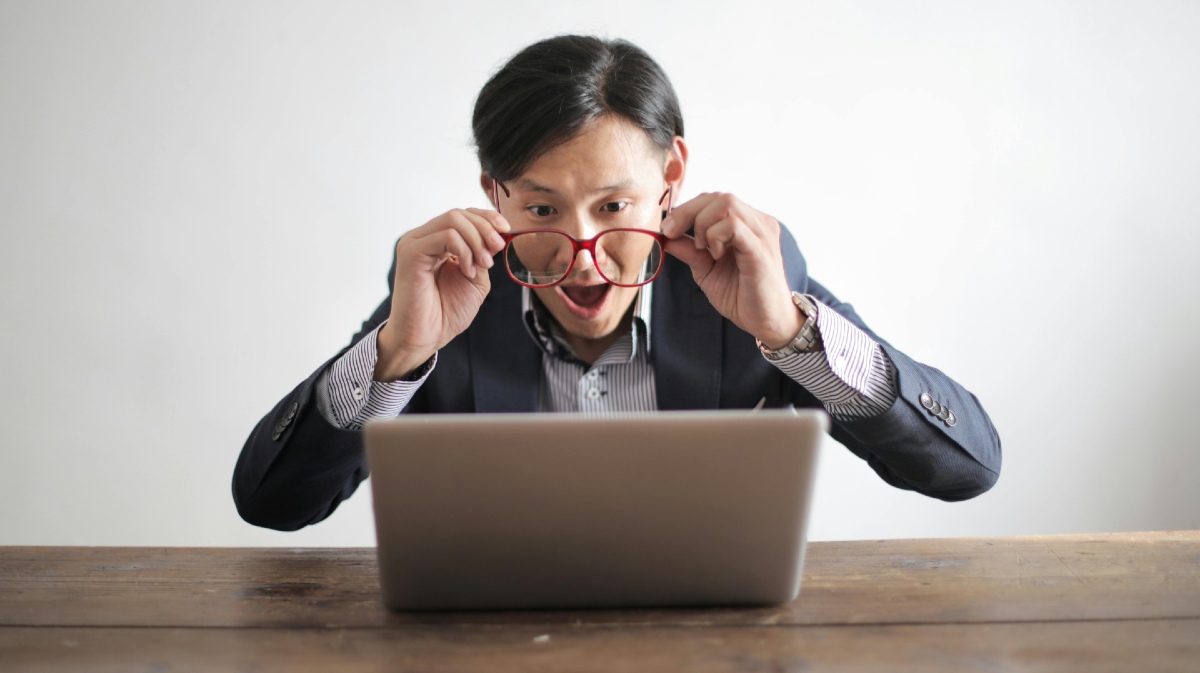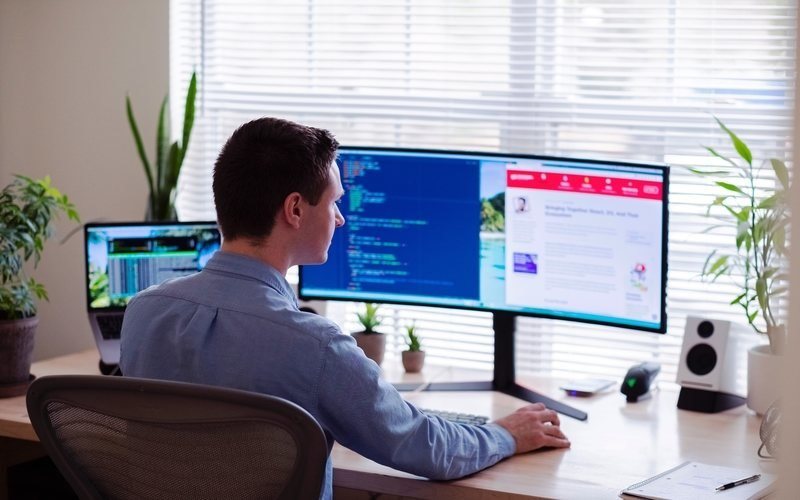There is arguably no tax measure so fiercely debated as negative gearing, the strategy that effectively allows property investors to reduce the tax they pay if their investment properties make an overall loss.
According to the latest Australian Taxation Office (ATO) figures, 2.25 million individual taxpayers claim deductions against the rental income they’re making. Of these, just under half, or 47%, are ‘negatively geared’, that is, make an overall loss on their rental properties.
Although the latest ATO figures are published in 2024, they pertain to the 2020-21 tax year when interest rates in Australia were low. It’s expected higher interest rates that started escalating in May 2022 will see significantly more property investors making a net loss on their properties.
If you’re a property investor, or looking to become one, chances are you will have used negative gearing or considered how it could work for you. So, how does it operate, what can you claim, and what are some of the benefits and drawbacks? Let’s find out.
What is negative gearing?
Negative gearing occurs when you borrow money to make an investment, and the ongoing expenses of that investment are greater than the ongoing income you receive from your it. In this scenario, you may be able to deduct this loss from your total taxable income for the financial year, thus saving you tax. This can apply to any asset, be it property or shares. For the purpose of this article, we’ll focus on property.
But let’s step back a bit. What’s gearing? Gearing simply refers to borrowing money to buy an asset. There are two types of gearing: positive gearing and the aforementioned negative gearing. Positive gearing is the opposite of negative gearing, which means the annual income from your asset is greater than the tax-deductible expenses you’ve incurred from it during the financial year. When we’re talking about property, that means the rental income you’ve made is greater than the tax-deductible expenses you’ve forked out on the property over the past year.
How does negative gearing work?
There isn’t a set process defining how to negative gear, nor will you find the term in any tax law. The ATO states: “your rental property is said to be ‘negatively geared' if your deductible expenses are more than the income you earn from the property”.
For any financial year where you make an overall loss, the ATO then deems the tax result a net rental loss on your investment. You then may be able to claim a deduction for that loss, bringing down your total taxable income for the year and saving you money on tax. If your income isn’t large enough to absorb the rental loss, you can carry it forward to the following financial year’s income.
What can you claim on negative gearing?
Deductions you can claim are typically the costs you, the investor, have paid for, not your tenant/s. These could include:
-
The interest on your mortgage
-
Title search fees
-
Mortgage broker fees
-
Conveyancing/solicitors' fees
-
Valuation fees required for loan approval
-
Advertising if you need to find new tenants
-
Bank fees and ongoing loan fees
-
Depreciation
-
Council fees
-
Legal expenses
-
Property management fees
-
Insurance costs
-
Electricity, water, and gas not paid for by the tenant
-
Repairs and maintenance
Refer to the ATO, a tax agent, or an accountant where possible if you’re not sure whether a deduction falls into one of these categories.
See also: How is rental income taxed?
How to calculate negative gearing
If you’re looking to get a rough idea of how to calculate negative gearing, you can follow the process below:
-
Calculate your property income: This will typically consist solely of the weekly rent your tenants are paying. Provided the property has been tenanted for the whole financial year, multiply the weekly rent by 52. If it’s been vacant for any period, subtract the number of weeks it had no tenants from 52 then multiply by the weekly rent.
-
Calculate your property expenses: This will include the interest payments on your mortgage, insurance, property management fees, council rates, repair and ongoing maintenance expenses, and many other costs you may have incurred. (Refer to the list above.)
-
Subtract depreciation: As your property ages, so does its contents, bringing down their value. Using a depreciation schedule can help you calculate how much items like carpets, ovens, heaters, and other items have decreased in value, which you can also subtract from your taxable income.
This can give you a general idea as to how much the property is ‘negatively geared’ (or whether it is at all). However, it’s recommended you consult an accountant or tax agent who will have specialist knowledge as to what expenses are permissible.
Common negative gearing errors
According to the ATO, the most common mistakes property investors make in their tax returns are incorrectly claiming:
-
renovation/improvement costs as repairs and maintenance costs. Both are claimable but renovations/improvements need to be depreciated.
-
expenses when the property isn’t available for rent. You can only claim deductions when your property is generating rental income (or is available to rent but is vacant). You can’t claim any expenses for when it’s off the rental market for any reason.
-
investment property loan repayments. You can only claim interest payments on your property loan, not any principal repayments.
-
expenses they don’t have receipts for. It should go without saying, you will need to have proof of your claims.
Negative gearing case study
Negan Geary buys an investment property valued at $500,000. He has a $100,000 deposit (20% of the property’s value) and takes out a loan for $400,000.
The loan is an interest-only mortgage, popular among investors, repaid over 25 years with a five-year interest-only period, at an interest rate of 3.50% p.a.
Negan’s monthly repayments are $1,168, or $14,016 for the year. He also had to pay $1,000 to fix the air conditioning at the property, $3,000 on home and contents insurance, and $2,000 in property management fees. Negan’s total investment expenses for the year came to $19,016.
Negan charged $300 in weekly rent, taking his annual income to $15,600.
Negan paid $3,416 more in expenses than what he earned in rental income. As a result, his property is negatively geared, and he may be able to deduct that amount from his taxable income for the year.
What are the risks of negative gearing?
Negative gearing is a popular and often viable investment strategy, but that doesn't mean it comes without risk. It’s worth considering some of the common drawbacks:
What happens if you can’t find tenants for the property?
Arguably the most important variable in having an investment property is having one with tenants in it. If your property is vacant, you’re probably losing money at a rapid rate. For example, if your property sits vacant for just one month and you’re charging $400 a week in rent, you’ve lost out on $1,600. That’s a serious chunk of money, particularly when you’re paying back an investment loan.
If you’re planning to negatively gear, you’re accepting you’re making a loss. But if you don’t have tenants, that loss will be even greater. You will more than likely still have a mortgage and bills to pay which your regular income may not be able to cover.
It’s vital you understand that although negative gearing can be an effective strategy, at the end of the day, you’re still losing money. That means the money you need to live and maintain an investment property has to come from somewhere. If you can’t afford to have an empty property, you could get into financial strife.
What if the property doesn’t increase in value?
Negative gearing can be a successful strategy for investors as they carry their losses forward to a year where they plan to sell the property. All goes well when the property has risen in value, which offsets the losses incurred in previous financial years, and still makes the investor a nice profit. [Bear in mind, this profit will likely be subject to capital gains tax (CGT).]
However, if your property doesn’t rise in value, you could be in trouble. You may be facing a situation where you’ve been negative gearing for five years, losing thousands of dollars each year with the goal to sell when the property goes up in value, but it hasn’t. At this point, you may be in serious debt and have to sell anyway to cover your costs.
If you’re planning to negatively gear an investment property, it’s important to buy in suburbs with strong capital growth opportunities. These suburbs are also typically places where people want to live, meaning your property wouldn’t be sitting vacant and consistently bringing in rental income.
See also: 6 tips for wannabe property investors
What will I do if interest rates rise?
The prospect of changing interest rates affects all borrowers. It’s worth remembering low interest rates will mean your investment loan repayments are also likely to be low, so if you’re negatively gearing, your overall losses may not be too great, and your tax benefit may not be that significant either.
But how could you handle it if interest rates were to rise? Many property investors found themselves in exactly this situation during the recent escalation in interest rates which began in May 2022. While rents also rose over the ensuing 18-month period, in many cases, they failed to keep pace with rising investment loan repayments, resulting in many investors selling.
If you’re looking to negatively gear an investment property, it’s vital you leave yourself a buffer in the event interest rates rise. If you haven’t planned for this eventuality, just a small interest rate hike could send you into crippling debt and force you to sell regardless of whether you’ve reaped any financial benefit.
Should I use negative gearing?
If you’re weighing up whether to use negative gearing as a property investment strategy, here are some of the questions you should be asking yourself before making a decision:
-
Does my property have strong capital growth opportunities?
-
Can I afford to incur the losses associated with negative gearing for a number of years?
-
How long can I afford to negatively gear before I need the property to be positively geared?
-
Can I afford the investment loan repayments in the event the property is untenanted?
-
Can I afford the investment loan repayments in the event interest rates rise?
-
Will the potential profit made from selling the home be greater than the losses I incur while negatively gearing?
-
Is this the most suitable investment strategy for me or should I explore other investment avenues?
If you still can’t make a decision, it’s wise to consult a financial adviser.
What’s the point of negative gearing?
Negative gearing has been a hot topic in the Australian political landscape over the past decade with some critics questioning the favourable tax treatment it receives. Labor went to the 2016 and 2019 federal elections promising to limit the tax benefits of negative gearing to new properties only and halving the current 50% capital gains tax discount investors receive when they eventually sell their properties.
In late 2024, it was back on the political agenda after it was revealed Treasury was asked to cost possible changes to negative gearing and capital gains tax concessions. It was later announced the Albanese Labor government wouldn’t be proceeding with any changes.
You might have read this article and thought, why do we even have tax benefits for negative gearing? Being such a politically charged issue affecting so many people, it’s worth presenting some of the arguments for and against the policy:
For:
-
It acts as an incentive to prospective investors. Greater investment activity means more houses get built, which is vital given Australia’s stretched housing supply.
-
Many landlords are ‘mum and dad investors’ who aren’t particularly well off. Currently, 71% of property investors have one investment property. Negative gearing eases the financial burden of owning property and encourages more to become investors.
-
Encouraging more people to invest means there may be fewer people reliant on the age pension in the future
-
Scrapping negative gearing could mean it will become more expensive to be a landlord. It’s feared increased costs and reduced tax benefits will see rents rise to compensate.
Against:
-
Greater investor activity could mean there is less housing supply for first home buyers and owner-occupiers. This, in turn, could raise house prices and make it harder for young people to enter the market or for existing homeowners to upgrade their homes to meet their changing needs.
-
Negative gearing helps many people who are already asset-rich and don’t need the tax break, that is, helping the rich get richer.
-
Negative gearing deductions costs the government billions of dollars in lost tax revenue each year.
Pros and cons of negative gearing
Negative gearing can be a great way for investors to save on tax but it’s not without its pitfalls. Here are some of the pros and cons:
Pros:
-
Potential tax savings by offsetting losses you incur in the year
-
If your property has grown in value when it comes time to sell, you may be able to make back the losses you’ve incurred
-
Claiming for expenses and depreciation can reduce your taxable income
Cons:
-
You need to be able to afford the loss you’re incurring
-
If your property doesn’t increase in value, your strategy may not be viable
-
If interest rates rise, your losses will increase which you need to be able to cover
-
Your borrowing power may decrease if you wish to purchase another property
Saving.com.au’s two cents
Negative gearing is a viable property investment strategy being employed by almost one million Australian taxpayers at the last official count. Not only can it effectively reduce an investor’s taxable income, it can also provide an affordable, tangible wealth-creation vehicle that is relatively simple to understand compared to some other investment classes.
However, buying an investment property with the intent of negatively gearing it is not without its risks. You need to ensure you will still be able to afford to make loan repayments if the property were to be vacant for an extended period or if interest rates were to rise - or worse still, if both these eventualities occurred simultaneously.
Anyone considering negative gearing an investment property needs to do their homework first to ensure they’re buying a suitable property - one in a desirable location to attract renters and with good capital gains prospects. It’s highly recommended you also speak to a financial advisor or tax professional to see if negatively gearing a property is the best investment strategy for your circumstances.
If you're still keen to dip a toe in the property investment market, the table below features investor loans with some of the lowest interest rates on the market:
Lender Home Loan Interest Rate Comparison Rate* Monthly Repayment Repayment type Rate Type Offset Redraw Ongoing Fees Upfront Fees Max LVR Lump Sum Repayment Additional Repayments Split Loan Option Tags Row Tags Features Link Compare Promoted Product Disclosure
Disclosure
Promoted
Disclosure
Promoted
Disclosure
Promoted
Disclosure
Disclosure
First published on August 2021
Photo by Leon Seibert on Unsplash

Ready, Set, Buy!
Learn everything you need to know about buying property – from choosing the right property and home loan, to the purchasing process, tips to save money and more!
With bonus Q&A sheet and Crossword!







 Harry O'Sullivan
Harry O'Sullivan

 Denise Raward
Denise Raward
 Harrison Astbury
Harrison Astbury


